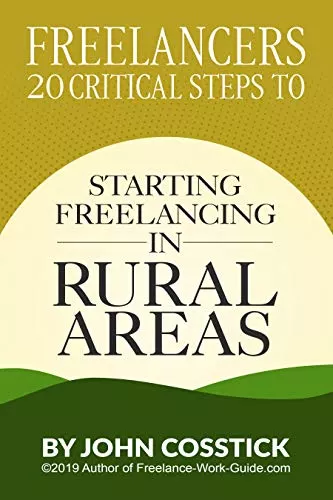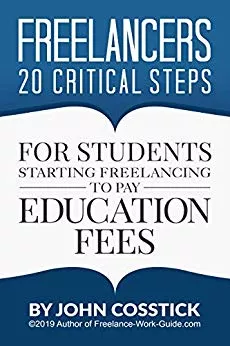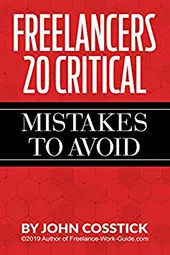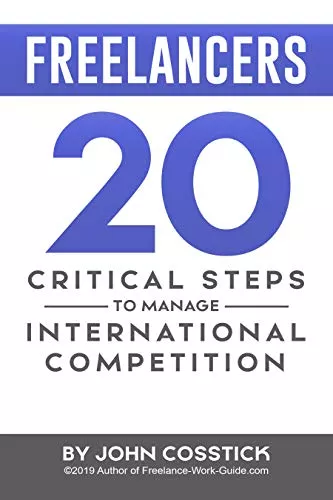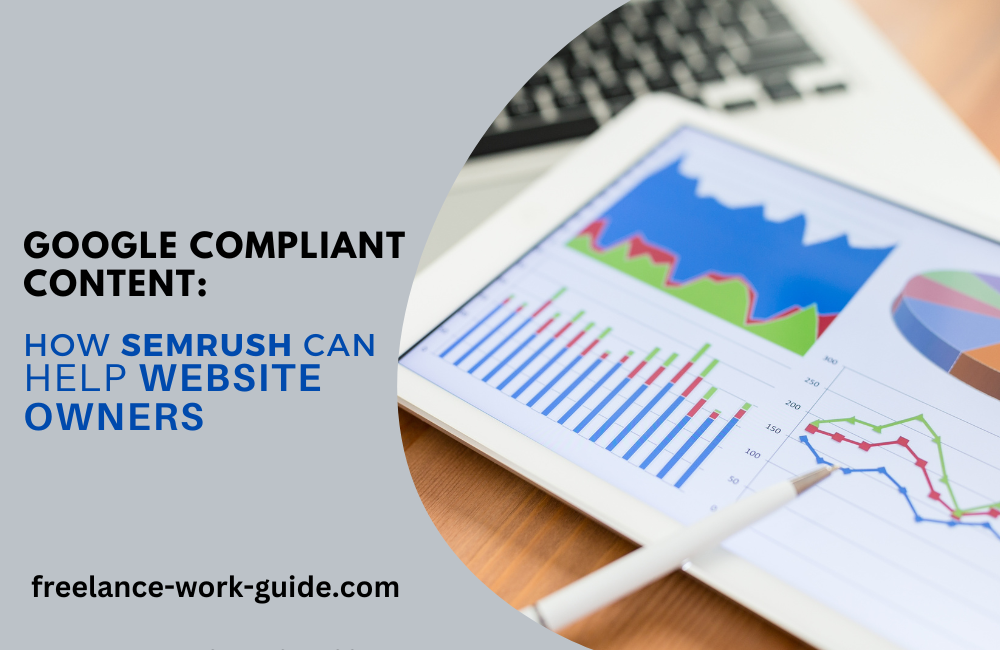
Table of Contents
- What Is Google’s New Helpful Content Update?
- How Google Structures Its Updates
- From Simple Keywords To Compliant Content
- Why SERP Rankings May Drop After a Core Update
- Google Quality Rater Guidelines and E-A-T
- Do You Really Need Google Optimized Content?
- Updating Your Website to Comply With Google’s Helpful Content Update
1. What Is Google’s New Helpful Content Update?
The new Google compliant content is redefined by Google in their new helpful content update. This article’s goal is to help you understand what this update is and how important it is to websites owners and those who create website content. It will also explain how to comply with Google’s new requirements. This is especially importance to those that are using Artificial Intelligence (AI) to produce content. This explanation will enable AI users to modify their approach to creating content.
The Importance Of Google Search
Google is considered one of the Big Five American information technology companies and uses its updates to ensure users find the right information when they search the internet. The search engine giant reported, “Google Search is updated thousands of times a year to improve the experience and the quality of results.” Most of these updates are not noticed or announced, but core updates are issued every two or three months and constitute the most significant changes.
In June 2021, Google reported, “Thanks to ongoing improvements, our evaluation processes show we’ve decreased the number of irrelevant results appearing on a search results page by over 40% over the past five years.” Core updates modify the databases that Google’s algorithms run on and generally centre on one area, such as the August 2022 helpful content update.
What Search Improvements Does the Helpful Content Update Provide?
Google’s helpful content update is part of a wide campaign to deliver search results that include websites with better content. The update seeks web pages with original and applicable information written by people with the intention of answering user queries. This latest core update rewards people-first website content that produces the results users expect.
This Article Helps Website Owners Comply With the Helpful Content Update
Including website content that is compliant with Google’s latest core update will improve search engine results page (SERP) ranking. Digital marketers continuously improve their websites to not only get the best SERP but also appear on the first page of those results. An update from Google means it made changes to website content indexes and the search engine optimization (SEO) methods the site uses. Updates to Google’s algorithms also include refreshing the data on web pages and modifying its own filters to reflect search statistics and trends.
Webmasters will find information in the following chapters regarding how the helpful content update impacts their website and why it is important to understand the effects on their site’s ranking. With each core update, changes and improvements need to be made to ensure websites provide users with a streamlined experience and that they are finding content relevant to their search.
This discussion will focus on the methods and content that will provide a better SERP ranking, including expert information that can be trusted as a go-to for knowledge and answers. Google indexes particular information from each website to determine if its content is high-quality and validates whether the content is authoritative.
Read on to find out more about Semrush tools and expertise in helping webmasters include compliant content to satisfy Google’s new helpful content update requirements and for future core updates.
2. How Google Structures Its Updates

Google updates its algorithm regularly to improve its users’ search results. It typically makes updates based on various factors, including how users interact with the search engine, what content they are searching for and what other websites rank higher for similar queries. Changes to its algorithms reflect an effort to improve the relevancy and accuracy of the search results presented to users.
Google typically organizes the algorithm updates around a few core concepts:
- User interaction
- Page quality
- Website authority
- Links and backlinks
- Security measures
- Mobile device format
- Artificial intelligence
How Google’s Helpful Content Update Affects Websites
The Google helpful content update is a larger-scale update to the search engine that focuses on improving the content quality found on Google, including making it easier to find high-quality information from authoritative sources. The update also has a new algorithm that favors content from trusted sources and changes how Google ranks websites. These more significant updates are considered core updates.
Core Updates versus Minor Updates
Google’s constantly changing its algorithms and does not release a specific schedule for when these minor update changes will occur. Minor changes are based on how often keywords are used to search the internet and how relevant the results are for users. However, changes are typically made in the early morning or late night hours to avoid any noticeable changes in search results during the day.
When Google issues comprehensive updates or core updates, it announces the kind of update and when it will be launched, as some updates may produce changes to website rankings. Webmasters who add and refresh their sites often and track SEO performance will notice more differences than stagnant websites.
Usually, a lower SERP ranking after a core update may appear that the website is no longer content-compliant when it may take a few days to regain its position in search results.
Still, if a website is maintained and updated to satisfy the core update’s requirements, its rankings will remain intact and can improve. The helpful content update looks for valuable and informative results that are people-oriented, not added to a site just to satisfy marketing results. In the next chapter, we will discuss compliant content for your website.
3. From Simple Keywords To Compliant Content
Google’s helpful content update is designed to improve the quality of search results by rewarding websites that create content that is helpful to users. This includes informative, well-written content relevant to the user’s query. Websites that provide valuable content are more likely to rank higher in search results, and this update will help ensure that users are more likely to find the information they are looking for.
Website Best Practices That Create Optimized Results for the Helpful Content Update
The helpful content update does not eliminate the need for standard SEO practices, such as keyword use and metadata, but instead looks for people-first content. The following types of website content are considered people-first. This will not apply to every website, but it illustrates Google’s people-first content compliance:
- The website should have a primary focus and purpose. For example, a website that sells dog food and medications should not include articles and information about products for cats.
- Articles and content should be educational and informative. Will a user feel like they learned something after visiting your site? Does your content answer a question?
- Do links that leave your website take users to valid and supplemental websites with a trusted reputation?
- Do articles and reviews demonstrate first-hand experience with a product or service? Reviews should be written from the website owner’s perspective and not include customer reviews.
Through artificial intelligence (AI), the helpful content update will recognize search engine-first content on your website and penalize you with a lower place on the SERP. Content to keep in mind includes the following examples:
- Using automated content creation tools will result in dry, sterile articles without the emotions and reactions naturally written articles include. AI and machine learning algorithms will detect this type of content.
- Does your content summarize or simply recreate what everyone else says, or is it original and creative? Writers who look beyond the obvious when writing content produce better search results.
- If your content is not packed with direct and solid information, users will leave your website and look elsewhere for the info.
- Writing content to satisfy what some say is the minimum word count for Google will undoubtedly result in filler and fluff — two things Google frowns upon. Google does not have a word count preference.
- The helpful content update considers practices such as stuffing keywords, misspelling keywords based on typical user mistakes, and placing keywords where they do not naturally work as negative content, which lowers the website’s SERP ranking.
- If your content promises to answer a question, provide the answer early in the article and use references or real-life experiences to back it up.
Webmasters must ensure that their content is helpful and relevant to their audience. Additionally, webmasters should verify their content is easy to read and understand.

To inspect the course content follow this
link:
Semrush Content Marketing Toolkit
Course – Semrush Academy
4. Why SERP Rankings May Drop After a Core Update
Many potential reasons may cause your website’s SERP results to drop after a recent Google update. It is important to remember that Google is constantly changing and updating its algorithms, so it is possible that your website was affected by one of these changes.
The most common reason is that the update has caused Google to see some of your content as less relevant, which can lead to a decrease in your rankings, allowing other websites to rise on the SERP.
How the Helpful Content May Drop SERP Rankings and Why
With the helpful content rollout, Google included a new site-wide signal as part of numerous signals used to rank web pages. Signals consist of parameters from a user’s search, such as:
- Search words and phrases
- Relevance of a website compared to the search
- Web page usability
- Expert sources
- Weight of each search type
A website with fresh content that reports on dog food recalls will rank higher if a user searches for recent warnings about dog food brands. Searches containing keywords, such as current football scores, will trigger signals for Google to find the games of the day near the user’s location (if they have their location turned on).
Signals contain data that helps Google search and find relevant data on websites based on the user’s queries. If you search for dog food, websites with the words “dog food” found hundreds of times do not contain relevant info and will rank lower.
Additional people-first factors that affect SERP include mobile-friendly websites so people viewing and interacting with web pages can easily view the content and graphics. Do the website and its pages load quickly? People-first sites are fast and assessable for users. Slow sites or content that is not mobile-friendly constitutes negative content and ranks sites lower than other websites that provide fast-loading and mobile-friendly pages.
The helpful content update may take a while to recognize when unhelpful content has been removed from websites. It could take months to improve ranking as the signal is updated and the negative content is removed long-term. It is critical for webmasters to continuously monitor their site’s ranking to ensure they are creating and adding compliant content. Next, we will look at Google quality rater guidelines and expertise, authoritativeness, and trustworthiness (E-A-T).
5. Google Quality Rater Guidelines and E-A-T
Currently, there are at least 1.9 billion live websites, and the number increases by the second. Google processes billions of searches each day from countries worldwide in close to 150 languages. Its algorithms look through hundreds of billions of individual pages in its extensive database to find what users are looking for. Many different systems and indexes are used to deliver the most helpful results. Two processes Google uses to improve SERPs are its quality rater guidelines and E-A-T.
Google’s Search Quality Raters
Google is always looking for ways to improve search results for users and enlists the help of evaluators known as search quality raters. These third-party entities include more than 10,000 people globally. All raters receive extensive training to learn Google’s Search Quality Rater Guidelines. Feedback from raters includes reports on what updates improved search results and provides information such as a web page’s main importance or what language it uses.
Search Quality Rater Guidelines
Google’s Search Quality Rater Guidelines include more than 170 pages of detailed instructions and methods for raters to follow. Google summarizes the guidelines in one phrase: “They help make sure Search is returning relevant results from the most reliable sources available.” The Search Quality Rater Guidelines are available to the public. Below is a partial list of instructions and guidelines topics from the actual document:
- Raters must represent people in their rating locale
- Web page quality rating guidelines
- Identifying main content
- Identifying sub-content
- Finding about us, contact information and customer service information pages
- Website reputation
- E-A-T
- Determining levels of page quality
- Finding negative content, including too many ads, low-quality content, lack of information and deceptive page purposes
E-A-T
The E-A-T content test carries heavier weight with SERP and looks for content quality. Google search weeds out low-quality content and elevates websites with high-quality information that reveals the website owner’s expertise, authoritativeness, and trustworthiness. For example, a website about dog food that publishes content suggesting the best dog food for types of dogs ranks as a high-level site when a veterinarian creates the content. Webmasters and content writers do well to read the guidelines and implement some of the rater guidelines to improve its E-A-T.
Next, let us answer the question: Do you really need Google-optimized content?
6. Do You Really Need Google Optimized Content?
Google-optimized content is written to rank well in Google’s search results. This can include using keyword-rich titles and descriptions, as well as ensuring the content is easy to read and relevant to the topic at hand. A website’s ranking on the first SERP also depends on the website’s authority, known as domain authority (DA). Websites are scored from one to 100 based on their content and relevancy within their industry or expertise concerning a specific topic.
A DA score of 95 to 100 is excellent and hard to obtain. Websites at this level include Microsoft, Apple, YouTube, and Google. Click here to access a free DA checker for your website. Another method to establish your website as authoritative is to include backlinks to high-ranking sites. Check the DA for sites within your website’s topic or industry before obtaining backlinks. Low-scoring sites will lower your DA.
On the website Freelance Work Guide, the article “Top 20 Ways Freelancers Can Build A Business Client’s Website Authority” discusses methods to increase a domain’s authority. Unique and optimized content is an essential part of becoming Google helpful content-compliant, whether written by in-house writers or freelance contractors. Content is the bulk of people-first websites with additional elements such as readability, mobile layout and ease of use contributing to the DA score.
DA Score Levels
The following list is a ranking of DA scores and their effect on a website’s SERP:
- DA of 0–30: This exceptionally low DA will push a website’s SERP ranking several pages back in the results
- DA of 30–40: Below average and will also lower a website’s SERP position
- DA of 40–50: While this is not the optimum DA score, it is an average for many websites but indicates content needs improvement.
- DA of 50–60: This is considered a good DA; still, optimizing content will raise the DA and significantly improve the SERP position
- DA of 60–70: At this level, a website has a better chance of landing on the first page of SERP results
- DA of 70–80: Considered an excellent DA, websites ranking at this level are top contenders for SERP positions close to the top of SERPs
- DA of 80–100: This level DA is where you will find sites such as Facebook at one hundred, Vimeo at 98 (Vimeo provides plenty of backlinks), Instagram at 97, Soundcloud at 93 and Scribd at 92 (easy to use for SEO and backlinks for excellent results)
Companies such as Semrush, a software as a service (SaaS) provider, offer an all-in-one SEO package that includes modules to help with press releases and content, social media posting, market research, SEO and offers paid traffic options. Semrush’s goal is to provide superior content to optimize websites for search engines and increase SERP and DA rankings.
To read about 12 Things You Can Do With a Free Semrush Account click HERE.
7. Updating Your Website to Comply With Google’s Helpful Content Update
Google’s helpful content update inspects websites for content it deems unhelpful. If too many articles are signalled as unhelpful, the website loses its momentum on SERPs. If a website with a high domain authority ranking contains numerous articles written with the help of AI, the content may not be helpful for site visitors. Content that is not people-first results in users having a poor experience and leaving the website to find accurate information elsewhere.
The helpful content update sends a message to webmasters: Auto-generated content will not be tolerated. AI-derived content is already against Google’s compliance guidelines, and this newest core update reaffirms the penalties for using it on your site. You can use AI-generated content as a skeleton draft for writers to build on and rewrite, adding human perspectives and insights. Information unique to the topic and not found on other sites is a huge plus for Google’s signals.
Analysing Your Website Content for Compliance
Semrush provides a Site Audit Tool that crawls a domain and creates a comprehensive statistics report with recommendations to improve SEO. When registered with Semrush, the audit includes critical issues and the fixes needed to correct them. Site Audit includes reports concerning crawlability, site performance, vital stats, and site health.
Website Helpful Content Updates: Recommended Inspections
Performing your own audit includes the following central inspections. When unhelpful content is identified, taking action to correct the content will help improve your website’s SERP ranking.
- Niche topics: If content was added that targets a niche topic but someone without research or experience wrote it, search traffic will not improve. The helpful content update penalizes sites with too many niche or off-topic articles that do not provide targeted information for users. Branching out to cover more markets only damages a website’s authority. Examine your website’s content and remove content outside your core market.
- New perspectives: Write content that adds a fresh perspective to a topic. Unique data, original images and new information on a subject make content attractive for users and garner rewards from Google’s search algorithm. While Google does not require a specific word count, it does want content that answers a question, solves a problem, and includes plenty of information without filler or fluff. Content should be fresh and concise, and every word should count.
- Trending topics: If content is created based on a trending topic relative to a website’s industry or domain but written from a place of limited knowledge and experience, users and Google will know. Either do deep research about the subject or, if it is a product, purchase a sample or ask the manufacturer for one to write a review. Taking text from various resources will result in confusing content that does not answer a user’s query.
- False or misleading answers: Regardless of who is writing content for your website, verify the information is correct. Google penalizes sites with inaccurate claims or info. Sometimes, creators publish misleading answers just to be highlighted in Google featured snippets, only to do more harm than good.
Google warns against content that makes false, inaccurate claims. Ask the right questions, look for answers, write accurately and correct yourself when necessary.
8. People-First Versus Search Engines-First Website Content
Most website content is created for the benefit of search engines rather than the reader. Google’s purpose for the helpful content update is to see that users land on websites with people-first articles rather than SEO-optimized web pages. It does not mean SEO practices are bad, just that there should be a balance of SEO and valuable content.
It is like a library. The Dewey Decimal Classification System is still used to organize and locate books, although today, it is done electronically. The Dewey Decimal system’s numbers and letters let users find the books that contain the information they are seeking. SEO helps Google search for your website and leads the user to the content related to their query. The two works in unison to deliver relevant results.
What Constitutes People-First Content?
Google can tell the difference between people-first and search engine-first content. Content writing for a website should have a target audience in mind. If the site sells dog food, consider the subjects that matter to dog owners: healthy food, specific food for puppies, grain-free foods, etc. For example, if a user searches for “dog food without beef,” it is likely their dog is allergic to beef. The first Google search result that appears for these search terms is a website about the best dog food for dogs with food allergies.
The article has all the proper keywords and SEO elements, including internal links, outbound authoritative links, allergen information, product reviews and further reading links. It is clearly written, offering direct info on an easy-to-read page. The SEO helped with the search, and the valuable content increased trust and credibility for the reader and Google.
How To Create People-First Content, Not Search Engine-First Content
To create people-first content, ask the following questions before adding information to your website:
- What kind of search would bring a user to my website?
- How can I create content that relates to the user?
- What content will stand out from other websites?
When users click on your web page, will they stay and read the article? If the page is designed with a clear purpose using a clean design, and the writing grabs the reader in the first sentence or two, you have created people-first content. If you have stuffed keywords in the first few sentences, the reader will find the text awkward and irrelevant. That equals search engine-first content. Below are several examples using keywords, such as dog food, beef, and allergies: (hint: only the third one is people-first)
- AI-created first sentences: There are a variety of dog food brands that make food without beef for allergies. Some brands use other meat sources, such as chicken or turkey. Others use a vegetarian protein source such as soy.
- SEO keyword-optimized first sentences: Dog food without beef for dogs with allergies is found at pet stores and online. If your dog needs hypoallergenic dog food, read the following best dog food without beef reviews to find the best brand.
- People-first content first sentences: Dogs can be allergic to certain foods just like people, and beef is one of the most common dog food allergies reported. Finding the right dog food includes learning about the brands offering alternative proteins and balanced ingredients to ensure your pup gets proper nutrition.
The last example is written to affirm the user found a page with good information and shows expertise in the subject. Using the word “pup” instead of “dog” relates to the sentiments of dog lovers, and the keywords are woven in naturally. In its simplest form, this is the difference between people-first and search engine-first content.
9. How Semrush Can Help With Google-Compliant Content
Google-compliant content is one of the most effective ways for users to find you and retain those who search for subjects addressed on your website. The content must stand out from the competition to gain trust and new customer conversions, increasing your business profits.

Exceptional content leverages your site’s SERP ranking and DA rating and lets people know your site is a good resource. Creating the right content is a multifaceted job that Semrush can help with.
Semrush offers a powerful content marketing tool to help you create, optimize, and distribute your content. With Semrush, you can:
- Research your audience and find out what they want to read.
- Create high-quality, keyword-rich content that ranks well in search engines.
- Optimize your content for social media and other channels.
- Distribute your content to your target audience.
- Measure your results and adjust your strategy accordingly.
The company includes an array of content marketing tools as part of its online SaaS platform that can be customized for each client. Business owners can use all automated Semrush tools or perform some of the work themselves.

For details of these Top 10 Free Internet Training And Website Traffic Courses Read Our Article By Clicking HERE.
Content Audits, Updating Content and Creating New Content
Content audits help webmasters and content marketers track content that could bring better results if updated. Updating content is easier than writing from scratch, and the renewed pieces can potentially improve SERP. Semrush offers a content audit tool and numerous other tools to help manage content and ensure the best results.
The content audit tool separates pages into four categories:
- Needs to be rewritten or removed as soon as possible
- Do not need to be deleted but needs substantial updates
- May require minor tweaks or updates
- Short content that needs more robust writing
After the audit is complete and content is deleted or improved, webmasters can begin planning new content and subjects. Ideas for new content can be derived from search statistics relating to applicable keywords, popular articles on similar topics found on your site, questions users are asking and your company’s newest offerings.
The next step is to create a content plan to determine what topics to create and when to post the articles. A calendar with posting dates helps to remain on task with content creation and updates. As you continue to refresh website content and become more compliant with Google’s guidelines, it is time to consider how to optimize website content for future core updates.
10. How To Optimize Website Content for Future Core Updates
Besides optimizing content per the Google helpful content update discussed in this book, the only method to prepare for future core updates is to optimize now. Follow Google’s Webmaster guidelines, which the company notes, “The Webmaster guidelines are general best practices to help your site appear in Google Search, as well as quality guidelines that, if not followed, can cause your page or site to be omitted from Search.” Besides the general guidelines, Google provides comprehensive content guidelines to ensure website content is ready for future updates in several categories. This is not an exhaustive list:
- Google best practices for images
- Best practices for videos
- E-commerce sites best practices
- Register your business details with Google
- Best practices for educational sites
- Having SafeSearch for your website
The Most Penalized Quality Guidelines To Avoid
Severe penalties may occur if websites contain any of the following prohibited techniques and content, even as far as deleting a website from search results. This partial list can be found in more detail on the Google Webmaster Guidelines page:
- Automatically generated or AI-generated content
- Sneaky redirects through links that redirect users to a significantly different website or a spam domain
- Link schemes such as links created by a person who received your product free in exchange for a great review, paying for services that create and distribute links to your site or buying and selling links
- Hiding links on your website by using a white text link on a white background, placing a link behind an image, setting the text link to a font size of zero or using CSS to push a link off the screen
- Including malicious behaviour on pages, such as including unwanted files in a download without informing the user, changing the user’s browser homepage without consent, and creating pages that install Trojans, malware, ads, spyware, or viruses on the user’s computer
A Note on Affiliate Sites
Google does not penalize Affiliate sites because they are affiliate sites. However, your website must contain high-quality content that offsets the affiliate content. Product descriptions and reviews with links to purchase the product must include enough valuable content to be included in higher SERP rankings.
Additional content for affiliate sites can come as text about extra features of highlighted products, other details such as price and features and meaningful articles that relate to the website’s industry or subject.
Being Google content-compliant is a critical step to increasing SERP and DA now and ensuring your website is ready for the next core update.
How can Semrush make your business more profitable?
Related Articles
Freelancers’ Free Training From Semrush
Semrush Academy- Top Ten Free Internet Training And Website Traffic Courses For SMEs
Disclosure
This post may contain affiliate links. When you click on them, we may earn a small commission at no additional cost to you.










